- Home
- Peter Ackroyd
Queer City Page 2
Queer City Read online
Page 2
The use of the word ‘queer’ signifies defiance and a refusal to use Karl-Maria Benkert’s clinical neologism – homosexuality. ‘Queer’ can also be construed as being beyond gender. It is an accommodating term, and will be used as such in this study. But it does not preclude the use of other words in this volume, such as gay, where they seem to be more appropriately or more comfortably placed. ‘Homoerotic’, another refugee from the twentieth century, may be useful in an emergency. It might also be necessary to invoke ‘LGBTQIA’, beginning with lesbian and ending with asexuality with transgender somewhere in the middle.
So queer people stream out of space and time, each with his or her own story of difference. Some may consider this to be a queer narrative, therefore, but the queerer the better.
2
A red and savage tongue
Of London, before the Romans came, little has been recorded. Yet it may be possible to peer into the suppositious Celtic twilight in order to glimpse unfamiliar passions. The name of the city itself is presumed to be of Celtic origin. It is easy to imagine that the male members of these early tribes were avowedly active in manner and nature, tearing out the heart of a stag with one hand while beating the taut animal skin of a drum with the other. In fact many of their leaders dressed in female clothes and, in ritual ceremonial, imitated the female orgasm and the pains of labour. Aristotle observed that the Celts ‘openly held in honour passionate friendship between men’; he uses the Greek word synousia for that passion, literally meaning ‘being together with’ or ‘of the same nature as’, but in more vulgar terms alluding to sexual intercourse. The Celts were known for their dark complexions and dark, curly hair. Oil was the lubricant of choice. ‘They wear their hair long,’ Julius Caesar wrote, ‘and shave all their bodies with the exception of their heads and their upper lips.’ You can still see them walking in the streets of London.
Strabo, the Greek philosopher and geographer, declared that Celtic youths were ‘prodigal of their youthful charms’. His near contemporary, Diodorus Siculus, commented in his universal history that the Celts paid little attention to their women but were instead greedy for male embraces; he recorded that it was considered to be a disgrace or a dishonour if a Celtic youth rejected an adult male’s sexual advances. The men lay on animal skins with a young male bed-mate on either side. His observation is repeated in Athenaeus of Naucratis, but he may just have been passing on a sexy story which could be applied to the Germanic as well as the Celtic peoples. It may be better to investigate individual tribes, many of them dating to the Mesolithic period, rather than denominate ‘Celtic’ or ‘Germanic’ peoples, but the subject is thoroughly confused. We can only speculate on activities rather than origins.
In the fourth century, Eusebius of Caesarea noted that among the tribes young men were ready and eager to marry one another according to custom. Bardesanes of Edessa wrote that ‘handsome young men assume the role of wives towards other men, and they celebrate marriage feasts’. Sextus Empiricus wrote of the Germanic people that sodomy was ‘not looked upon as shameful but as a customary thing’. The sources, fortunately, all agree.
These handsome young men were not unusual in a predominantly military culture, and the references are so frequent that they suggest an identifiable part of the population who took on the passive role as part of their transition to adulthood. Slaves, the clergy, and those who did not aspire to military honour were also of their number. From the evidence of the scholars, therefore, an alternative to conventional procreation was readily available and much in demand. This has remained throughout the history of London.
In Roman London we are on well-documented foundations. When the conquerors brought their brick and marble, they also brought their social customs. In the beginning two principal streets of gravel ran parallel to the river on the eastern hill. A military camp was established in the north-western quarter of the city. Taverns and brothels grew around them as naturally as wild grass. London was at this time a relatively new settlement, and therefore more receptive or more vulnerable to new practices and influences. By the time it had become a city, and a capital, it had grown out of all proportion. It also had become a rich city, filled with merchants and businessmen (or negotiatores) who no doubt purchased bodies as well as goods. It is one of the few settlements on earth that began as a city and has always remained one, with all the commercial and financial entanglements this history implies.
Urban life was conducted in the Roman fashion. The most ubiquitous practice of same-sex love occurred in the relationship between master and slave or between man and boy. The passive partner, in other words, had no political role. In what was essentially a city state, with its own independent government, the difference in status is important. Only the active could rule. Sexuality is not a free agent in society; society defines and dominates sexuality. Warriors who had been overcome in battle could be raped by Roman citizens. The defeated were sometimes instead penetrated by ‘radishes’; that may not sound too painful an ordeal but in fact the ‘long white icicle radish’ has always been grown in southern England to a length of just under six inches.
Paedophilia, or sex with a child, and pederasty, sex with an adolescent, were not condemned. The love between two free men was, on the other hand, considered undesirable and worthy of censure; this is not to say, of course, that it did not happen. But if a man were accused of such infamia, he might be stripped of his civic rights.
In the middle of a busy city such as Londonium, many opportunities were afforded by the various lupanaria or ‘wolf dens’ (public pleasure houses), fornices (brothels) and the thermiae (hot baths). The pleasure houses were expensive, and were no doubt largely patronised by the Roman administrators and Romano-British nobility. The brothels of a lower class might have curtained entrances, behind which a number of small booths were established. The wooden houses had roofs of thatch and brightly painted plaster interiors. The palaestrae, or sporting facilities, within the hot baths were well known for casual pickups.
But sex could be advertised in the open, for the delectation of passing trade. Sometimes a male prostitute might stand in front of his own stall or ‘cell’ waiting for custom. He might also haunt a tavern, a lodging house or a bakery. He might come from the lower classes, or he may have been a foreigner or a slave. Slaves or captured foreigners were disembarked in open spaces near the major quays known as ‘Romelands’, and may have been sold on the spot; ‘Romelands’ could be found at Dowgate, Queenhithe, Billingsgate and the Tower. Male prostitutes were prized for the tax raised from them, and they had their own public holiday.
A Roman apologist for Christianity, Minucius Felix, stated that homosexuality was ‘the Roman religion’ and the second century Assyrian scholar, Tatian, confirmed that pederasty ‘was held in pre-eminent esteem by the Romans’. It was considered to be an admirable activity, and was no doubt as common in London as in Rome. It hardly deserved notice or comment, no more than the ‘Herms’ or stone pillars which stood at the major intersections; they represented Hermes with an erect phallus, and sometimes the phallus alone. It has not been emphasised enough, perhaps due to the modesty of classicists, that Roman society was intensely phallocratic; the worship of the penis was only ever equalled in regions of India.
The queer man in Greek history, who bears some relation to his Roman or even English brother, was described in the anonymous Physiognomonics (c.300 BC) as having ‘an unsteady eye and knock-knees; he inclined his head to the right; he gestures with his palms up and his wrists loose; and he has two styles of walking – either waggling his hips or keeping them under control. He tends to look around in all directions.’ He was also homo delicatus in Rome and London who, according to Scipio in 129 BC, ‘daily perfumes himself and dresses before a mirror, whose eyebrows are trimmed, who walks abroad with beard plucked out and thighs made smooth’. He was soft, with mincing steps and shrill or lisping voice. He wore violet and purple rather than white, but he also loved light green and sky blue. He kept
his hand upon his hip and scratched his head with one finger. In his discussion of Britain in his life of Agricola, Tacitus in the first century states that ‘the barbarians, as well, learn to condone seductive vices’. He also explains that the Romano-British soon imitated the vices and follies of their masters; in their ignorance they called it ‘civilisation’ but it was really ‘a part of their servitude’. New London became the mirror of old Rome.
Sartorial tokens of effeminacy were recorded in some detail by classical authors; you were what you wore. A mantle, made of soft wool, was worn by both sexes but for males had singular connotations. Boots of white leather, reaching to the knee or shin, were another sign. Garments dyed with saffron were worn by men with a difference. An ‘oriental’ headdress, resembling a turban, was considered effeminate as was a ‘soft shoe’ designed for wearing indoors. A sandal fastened to the sole by leather straps was deemed to be inappropriate, as were fine shawls or veils. Long and loose clothing, including the ankle-length tunic and the unbelted tunic, were not considered sufficiently male. Tattooing was also suspect. It used to be believed that graves containing jewellery were those of females, but that convenient illusion has been dispelled. It is now clear that men wore earrings, finger rings, or neck rings (torcs). An image of Harpocrates has been found in London; it is of a nubile boy god wearing a gold body chain, a device only previously displayed on goddesses.
Yet the men are only half of it. Some classical scholars have uncovered legal allusions to women lying together or even engaged in permanent or temporary relationships. To the evidence of the antiquarian can be added the discoveries of the archaeologist. In Great Dover Street have been found the remains of a female gladiator. This was within the Southwark district where social outcasts found their last resting place. She was in her early twenties. One of the objects buried with her was a lamp showing a fallen gladiator. The grave goods included stone pines (pinus pinea) which have only ever been found in the great amphitheatre of Roman London where they disguised the noxious smells.
She seems to have attracted wealthy admirers, despite her status as an outcast, and may be evidence of the popular fervour attached to the more daring contestants. Other female gladiators in the classical world are recorded with their own habits and customs. Many allusions were made to them and contests were sometimes held between women and dwarves. A marble relief, now in the British Museum, shows two women armed for combat.
Their sexuality, if such it was, can only be surmised. ‘How can a woman be decent,’ Juvenal wrote, ‘sticking her head in a helmet, denying the sex she was born with?’ There may be a further connection with London. Petronius writes of a female essedaria, a gladiatress, fighting from a British chariot. This is decidedly odd. Classical sources tell us also that in England women were as tall and strong as the men. Two females, in their mid-twenties, were found curled together in a burial site beneath Rangoon Street in the City of London. They were relatively sturdy with strong legs and feet; it is possible that they were accustomed to carrying heavy loads in building work or some other trade. Another joint female burial is recorded on the bank of the Thames at Bull Ward; one of them was older and had been killed wih a blow to her skull. Beside her was a much younger and smaller woman, with a height of four feet and nine inches. They may have been sisters, but they may not.
It is pertinent to note that male gladiators often gave themselves effeminate names such as Hyacinthus and Narcissus, and it seems more than likely that they had as many male as female admirers. They dressed to kill, with tunics made up of tassels and threads of gold, and with elaborate armbands. Inscriptions set up in their honour have plausibly homoerotic explanations. They sometimes conducted tours of England like a band of thespians. Many statues and copper lamps and bowls, and even earrings, displaying Hercules are found in London; characteristically he is nude and beardless, with short and straight ‘Celtic’ hair; he holds his club in his right hand but, in a find at Walbrook, three cupids hold up this weapon. He was in any case a divine hero for some Londoners.
But divinity asssumed another face. In the early fourth century the shadow of the cross fell upon Londinium. The change to Christian faith may not have been immediate but it was far-reaching. The bishops and their clergy came. The monks came. The missionaries continued to come. This was the century when the first laws were enacted against certain queer practices, although full prohibition of homosexuality was not enjoined until the sixth century.
As the cities of the Roman Empire declined, greater animus was directed against any and all minorities that had flourished in an urban setting. In the reign of the Byzantine emperor of the sixth century, Justinian, the sentence for sodomitical activity was castration of both parties, which in effect was a sentence of death. One law, promulgated in 538, warned the people of Constantinople that homosexual acts would ‘incur the just anger of God, and bring about the destruction of cities along with their inhabitants’. The example of Rome could be adduced but so might the decay of Londinium which had been left undefended by the early fifth century.
The earliest arrival of the Saxons has been dated to the beginning of the same century. According to the historian Gildas, the inhabitants of England were licked by a ‘red and savage tongue’. The archaeological evidence suggests that the city was thoroughly Saxonised by the middle of the sixth century, and Lundenwic emerged in what is now Covent Garden.
The Anglo-Saxons – essentially a collection of Jutes, Angles, Frisians and Saxons who had arrrived at different times and in different regions – had not yet been recruited for Christianity and they maintained their indigenous sexual traditions. The Roman descriptions of their homosexual propensities are so similar to accounts of the Celtic and the Germanic tribes that for all practical effects they are indistinguishable. It is of couse true that there are limits to what two men can do to, or with, one another. And it is also true that early historians often simply copied what they had read elsewhere.
It was a world of warriors governed by a rich and intense male culture. The young men of the noble class wore linen tunics, fastened at the wrist and waist by golden clasps; their clothes were ornamented with brooches and other jewels. Men as well as women dyed their hair; blue, green and orange were the colours favoured by the men. The early histories have their own salacious legends. When Mempricius, the fifth king of the Britons, turned to sodomy he was devoured by wolves. When Malgo, a sixth-century king of the Saxons, indulged in sodomy or ‘a sinne against kynde’ he died suddenly in his bath at the palace of Winchester.
The earliest collections of Anglo-Saxon laws make no mention of same-sex activity; the oldest code, from Ethelbert of Kent in the early seventh century, punishes bestiality, rape, adultery and incest but does not even allude to homosexuality. In the ninth century, Alfred quotes the Bible on the punishment of death for men who have sex with sheep but lays down no penalty at all for men who have sex with men. The dog never barks.
Saxon men were taller and heavier than the Romans or the Celts; they were clean-shaven but often sported bushy moustaches. Many had short hair in the belief that cropped hair rendered their faces larger and therefore fiercer. They may not have varied greatly from the Angles and Jutes who had crossed the sea with them, but were they prettier when younger? Bede recounts how Pope Gregory saw some young Angles on sale in a market of Rome, with ‘fair complexions, fine-cut features and beautiful hair’. The Pope is supposed to have said: ‘Non Angli, sed angeli’; but the little angels were no doubt destined for a fate harsher than a heavenly choir. The remark was later held against Gregory on the grounds that he was also a sodomite. As he might have said, ‘Vincere non potest.’ You can’t win.
Christianity did not arrive formally in England until 597 when Augustine landed at Thanet to convert the Germanic, rather than the British, people. Soon enough the Church had become an instrument of government and the Christian penitentials offered stern guidance for the punishment of sin. Homosexuality may not have been mentioned in the Anglo-Saxon co
des but in Christian documents it took an important role. In the penitentials the punishment for fornicating with another man was a penance of four years, and of ten or fifteen years for a further offence; a penance of seven years was applied to a ‘sodomita’ or ‘mollis’ for his general bearing in the world. It is clear enough that there was already a specific and recognisable group or community of queers which were given especial names by the larger society. One such name was baedling, which is derived from the Anglo-Saxon word for a boy or an effeminate man. It can also be interpreted as one who spends too much time in bathhouses. It has been suggested by some scholars that ‘bad’ derives from baedling, thus giving universal moral significance to a sexual difference. In a similar spirit of queer etymological conjecture, it has been surmised that ‘felon’ comes from fellare, to suck.
From another code (c.670s), associated with Theodore, Archbishop of Canterbury, comes the injunction that ‘If boys fornicate between themselves he judged that they are to be beaten’. It is also laid down that ‘who releases semen into the mouth, seven years of penance; this is the worst evil’. A boy who engages in intercourse with an adult male in holy orders is to fast for three periods of forty days. No punishment is assigned to the man. The boy was considered to be the temptor and instigator, perhaps, and it was a way of preserving authority in a male environment; it may also be that the period of fasting was a way of removing pollution from the child. Yet if it seems manifestly unjust it serves to emphasise the difference between early medieval and modern sexuality. One section of a penitential has a ringing introduction. ‘Let us Now Set Forth the Decree of Our Fathers before Us on the Sinful Playing of Boys.’

 The Clerkenwell Tales
The Clerkenwell Tales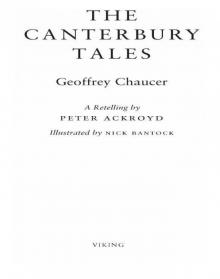 The Canterbury Tales
The Canterbury Tales J. M. W. Turner
J. M. W. Turner Chatterton
Chatterton The Canterbury Tales – A Retelling
The Canterbury Tales – A Retelling Alfred Hitchcock
Alfred Hitchcock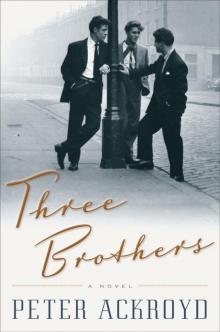 Three Brothers
Three Brothers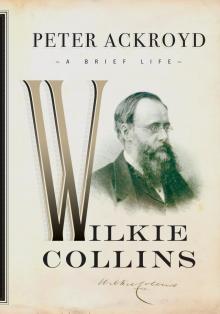 Wilkie Collins
Wilkie Collins Venice
Venice Poe
Poe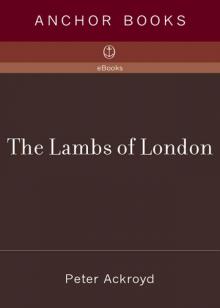 The Lambs of London
The Lambs of London London
London Queer City
Queer City Revolution, a History of England, Volume 4
Revolution, a History of England, Volume 4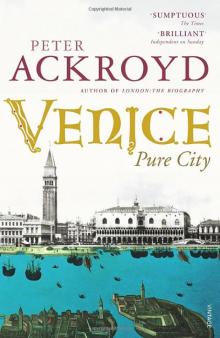 Venice: Pure City
Venice: Pure City Foundation
Foundation Thames
Thames The Plato Papers
The Plato Papers The house of Doctor Dee
The house of Doctor Dee Rebellion: The History of England from James I to the Glorious Revolution
Rebellion: The History of England from James I to the Glorious Revolution Albion: The Origins of the English Imagination
Albion: The Origins of the English Imagination The Fall of Troy
The Fall of Troy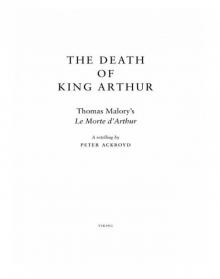 The Death of King Arthur
The Death of King Arthur The Trial of Elizabeth Cree
The Trial of Elizabeth Cree London: The Biography
London: The Biography The Casebook of Victor Frankenstein
The Casebook of Victor Frankenstein Hawksmoor
Hawksmoor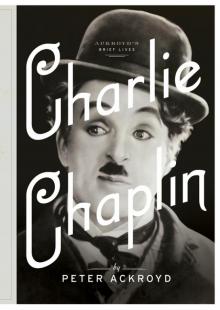 Charlie Chaplin
Charlie Chaplin London Under
London Under